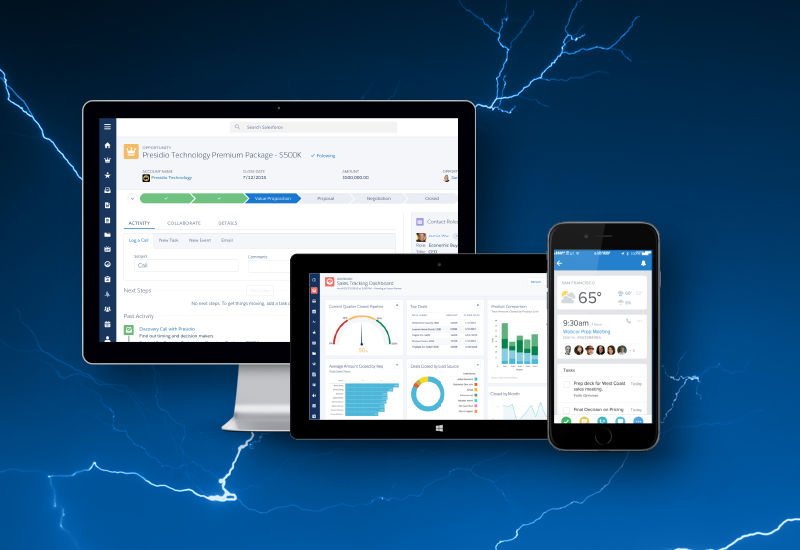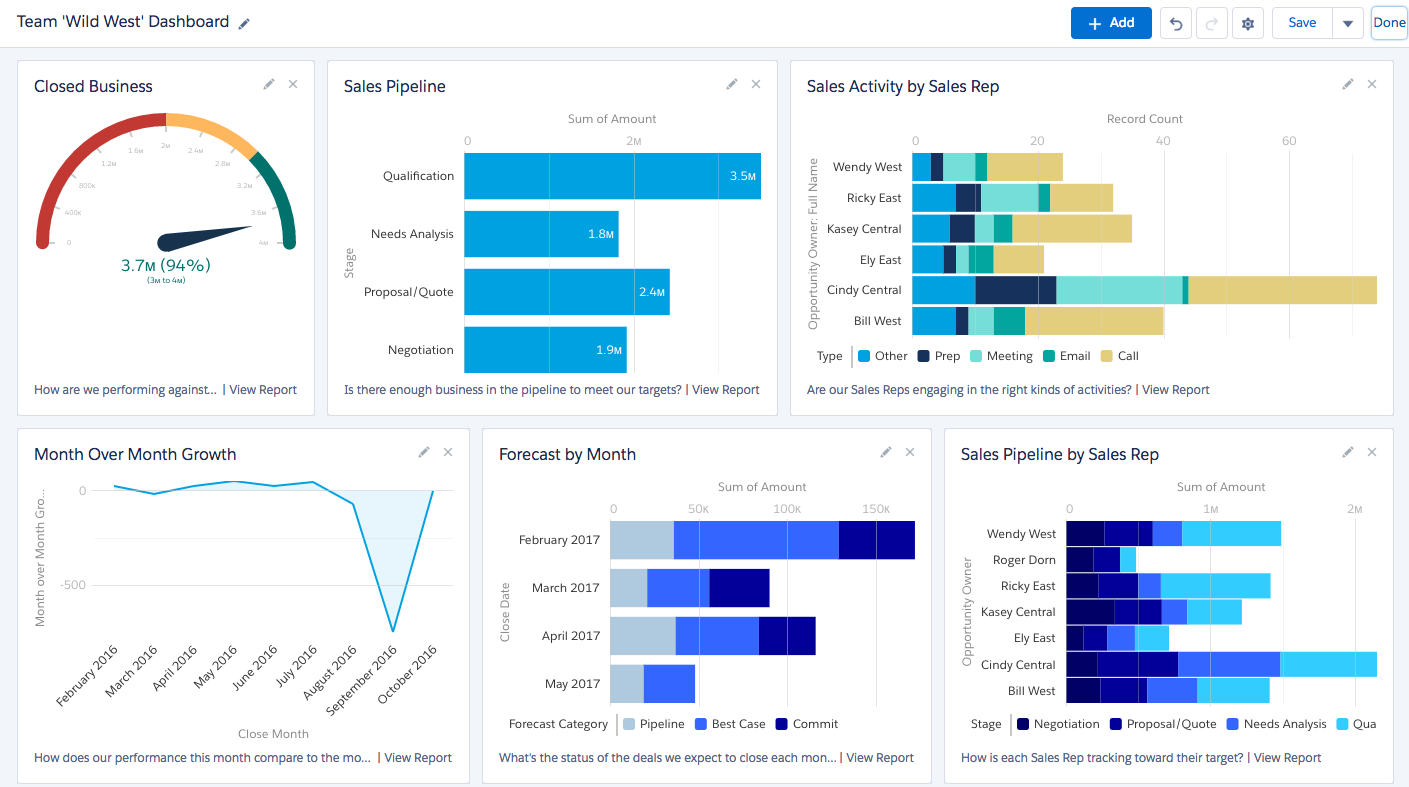5 Effective Ways To Use Salesforce For Customer Retention
Sales teams are perpetually up against the same goal: sell, sell, sell to increase company revenue. It should come at no surprise that many salespeople spend the majority of their time focused on customer acquisition.
Customer acquisition is the process of persuading someone to purchase a company’s product or service. Many companies view customer acquisition as the fastest and most effective way to increase revenue. After all, more customers = more money. Although this strategy can create desired results quickly, it’s usually not the best approach for the long-term.
To truly create lasting growth, sales teams must have strategies in place for not only acquiring customers, but retaining them as well.
Why is customer retention important?
Customer retention — the process of keeping customers as customers — encompasses everything a company would do to prevent customers from leaving and saying “see ya!” for another company with similar products or services. When sales teams implement strategies to retain customers, two things happen: costs go down and revenue goes up.
Did you know it’s 7x more expensive to acquire a new customer than to retain an existing one? For most companies, it makes financial sense to focus more on customer retention and less on customer acquisition, especially if it lowers costs. According to Huify, the likelihood of converting an existing customer into a repeat customer is 60 to 70 percent, as opposed to 5 to 20 percent for a new lead. This means it’s usually OK to lower the budget for sales and marketing — you won’t need to spend as much to turn an existing customer into a repeat customer.
For sales teams, the most significant source of long-term revenue comes directly from existing customers. They’re not only easier to sell to, but don’t need as much convincing to get them to buy again or upgrade. Likewise, existing customers are a goldmine of opportunity — as customer relationships deepen, referral networks grow.
There’s no denying that customer retention plays an integral part in increasing company revenue. According to HBR, companies can increase profits by 25% to 95% by simply increasing their customer retention rates by 5%. So how do you get customers to stay?
The key to customer retention
The foundation of any customer relationship is trust. When a customer decides to purchase your product or service, they are saying that they trust you and your company to deliver on their promise.
To earn customer trust, salespeople should lead with empathy from the moment the customer relationship begins. Every interaction — from the cold call to the onboarding email to actual product implementation — is an opportunity to respond to customer needs and improve their experience with your company, product, or service. You must work to create positive experiences throughout the customer’s lifespan consistently — the second a customer reaches the end of the sales funnel does not signal the end of the relationship. If anything, it’s where the real work begins.
By prioritizing the needs and experiences of your existing customers, you repeatedly earn their trust and, eventually, their loyalty. This is what customer retention is about — earning enough trust to create a customer for life.
Fortunately, Salesforce makes this possible and easy.
Using Salesforce for customer retention
Sales teams can strategically use Salesforce to improve customer retention rates — and company profits! — by centralizing customer data, personalizing customer communication, tracking customer interactions, engaging with inactive customers, and integrating customer service tools.
1. Centralize customer data
Data is the lifeblood of a company — it keeps systems moving and empowers teams to take action. In sales, having accurate and up-to-date customer information is critical to not only hitting revenue goals, but building lasting customer relationships.
With Salesforce, you can centralize all your sources of customer data into a single location, including communications with customers. This includes VOIP systems and email inboxes, which you can integrate with Salesforce to save voicemails, emails, notes, and more to a customer record, allowing anyone to see what’s going on with a customer at any given time. Creating a centralized view of a customer’s history with your product, service, or company enables teams to make better decisions.
Likewise, centralizing customer data ensures you won’t have to worry about verifying the accuracy of data or determining which duplicate data record is correct. Instead, you can focus on customers and their needs. However, if customer data is littered with inaccurate or missing information, then sales teams will struggle not only to acquire, but retain customers. Clean data is the foundation of a great customer experience — without it, everyone at your company is at risk of undesirable interactions and negative feedback. You can improve the quality of your centralized data by implementing data quality standards.
Until data quality is addressed, customer retention will be a challenging process. However, you can start small by ensuring that customer names are at least accurate — this opens the door to personalization: a tiny yet significant way to connect with customers.
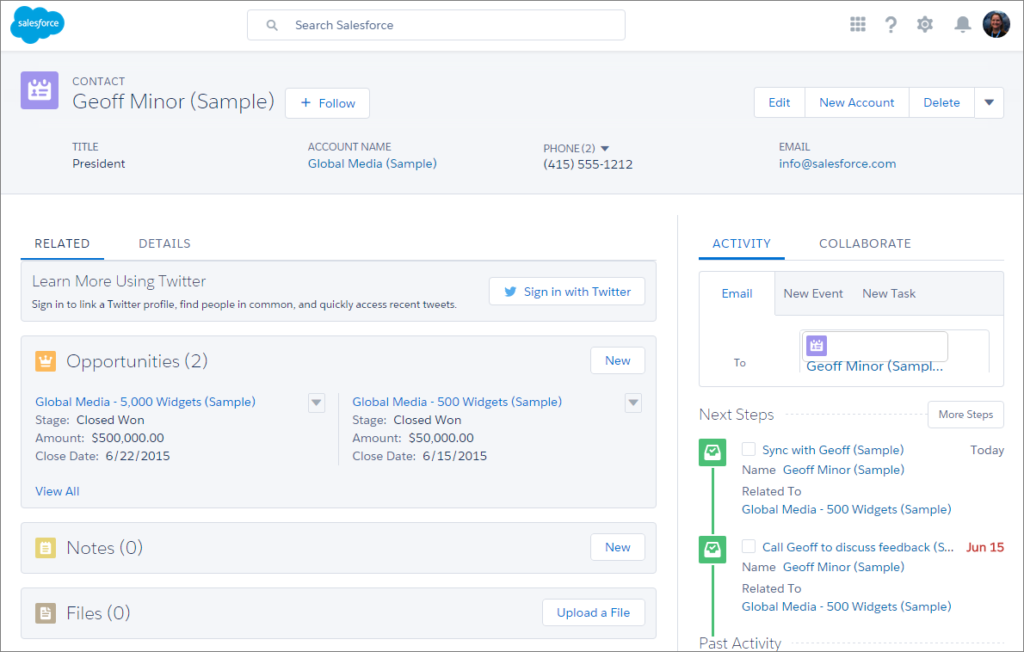
Salesforce makes it easy to keep customer account details in a single location (Image Source)
2. Personalize communication with customers
As Dale Carnegie once said, “a person’s name is to him or her the sweetest and most important sound in any language.” Using a person’s name not only makes them feel seen, but like they’re the most important person in the room. You can evoke these feelings in customers by personalizing communication with them.
With Salesforce, you can use Pardot Dynamic Content to personalize emails, forms, landing pages, and more. For example, you can configure email templates to display the customer’s name in the subject line or message body of the email. This is a simple yet effective way to target many customers, but still make them feel like the email was written personally for them. If you want to take personalization a step further, you can also customize the content of the email based on customer needs, interests, and even location. All this customer data is at your fingertips in Salesforce — think of the possibilities!
Email is just one way to use Pardot Dynamic Content to personalize the customer experience. You can also customize website content to appeal to existing customers. For example, if you send customers to a landing page for a limited-time offer, you can personalize the copy, labeling of buttons, and more so it feels like it was created specifically for each customer. This not only makes them special, but keeps their interest for future offers.
Personalization is a small but powerful act of showing customers that you care. However, personalization is more effective when you can also tailor communication to customer interactions.
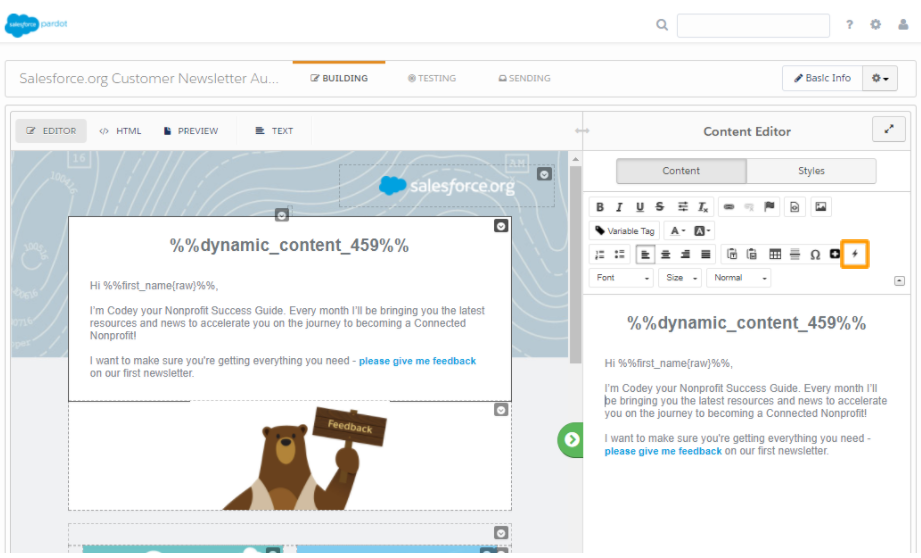
Personalize website content with Pardot Dynamic Content to add a personal touch (Image Source)
3. Track customer interactions
Data tells the story of your customer. From where they work to the last time they made a purchase, you can use this information to better understand and respond to the needs of your customers.
Using Salesforce, you can keep a pulse on what customers are doing by tracking their interactions in real-time. For example, you can see when a customer abandons their shopping cart or exits a lead generation form, which can help marketing teams make website adjustments. To gain additional insights into customer behavior, you can connect Salesforce data with other marketing data by using tools such as GA Connector. You’ll not only see what your customers are reading, but what they’re clicking on — or not clicking on — while browsing your website.
Having access to this data in Salesforce allows you to engage meaningfully with your customers at the right moment. For example, if you notice that a customer has recently downloaded a whitepaper or read a blog article from your company’s website, you can send them a follow-up email to ask how they’re enjoying said whitepaper or article. However, if that comes off as too intrusive for your liking, you can take the casual approach and send them a related whitepaper or article to maintain their interest. Likewise, if you notice that a customer hasn’t purchased anything in a while, you can reignite interest by sending them a special offer or discount.
By tracking customer interactions, you get the full story of every customer. This allows you to not only respond to existing customers, but engage with inactive ones.
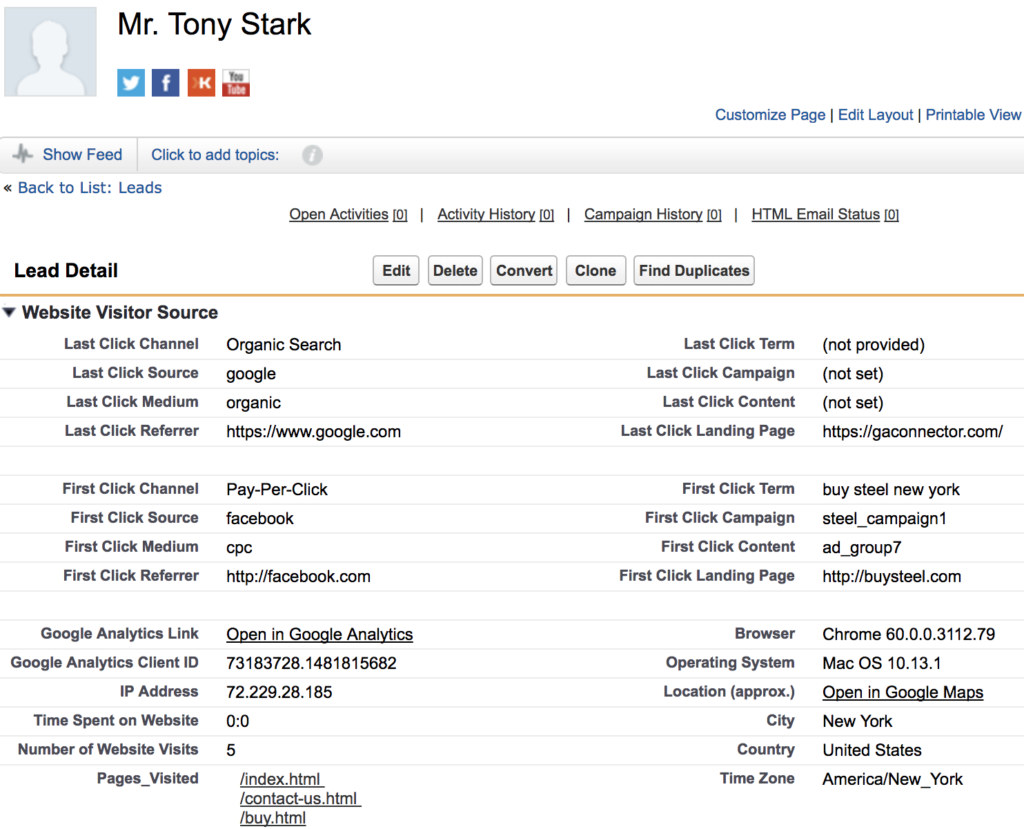
See how customers are interacting with your website with GA Connector (Image Source)
4. Engage with inactive customers
When a customer stops responding to calls or emails, many companies can’t help but feel as though the opportunity is now lost, so they abandon the customer. However, as shared earlier in this article, it’s more costly to acquire a new customer than retain an existing one. Your sales and marketing dollars are better spent trying to woo this inactive customer again instead of a new lead.
Luckily, staying connected to customers is easy with these three simple steps.
First, implement a ranking system in Salesforce to track how often a customer needs follow-up. You can do this by creating a required dropdown field named “Classification” and assigning values to determine the rank, e.g., “A” = follow up once a month, “B” = follow up once a quarter, and so on. This not only creates visibility into potential customer value, but accountability for sales teams to follow up.
Second, track every touchpoint with a customer in Salesforce by documenting the activity type, such as a call or email. This is a good habit for sales teams to build anyway, but is especially useful when they’re also in the habit of classifying customers after documenting each interaction.
Lastly, by classifying customers and tracking activity, generate a touch report that provides a list of customers that need touched according to classification. For example, if it’s the beginning of a quarter, you can filter the report by “B” to see who needs a follow-up call or email in the next week.
With these steps, you can take an organized approach to not only engaging with active customers, but inactive customers as well.

When the activity timeline goes quiet, it’s time to reconnect (Image Source)
5. Integrate customer service tools
Many companies have entire teams dedicated to customer retention — you can usually find these people in customer service or account management. However, siloing those responsible for managing customer relationships isn’t a good strategy if you want to improve the overall customer experience.
By integrating Salesforce’s customer service apps or implementing tools like Desk.com or Service Cloud, everyone can have access to customer complaints, issues, and requests. This information can be used to not only offer solutions, but upsell existing products or services that may be a better fit.
You can also use customer service data to reach out to customers who are currently experiencing issues — by letting them know you’re aware of what’s going on, you make them feel heard. Likewise, if an issue is taking too long to resolve, you can see who’s assigned to the ticket to make sure it’s getting addressed.
At the end of the day, customer retention means responding to customers, even if it doesn’t guarantee a sale. When sales teams switch out of acquisition mode and instead ask, “what can I do to build a deeper relationship with this customer?” they will be surprised by the results.
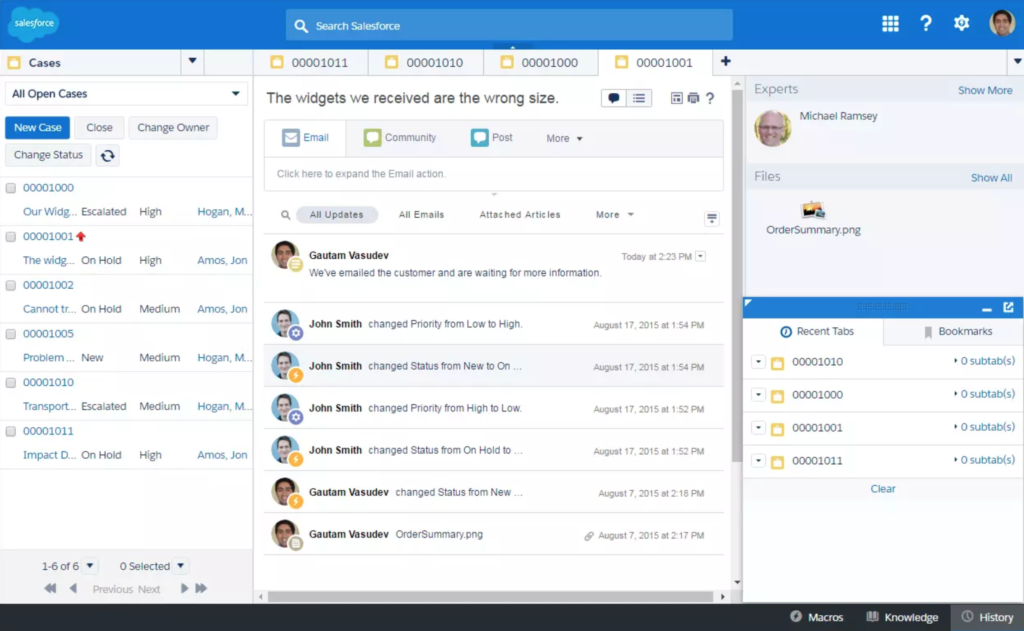
Manage customer service with Salesforce (Image Source)
Are you focused on customer retention?
Although customer acquisition is a fast and effective way for sales teams to increase revenue, it’s not the most sustainable strategy for long-term success. Paired with customer retention, however, it can be.
By implementing strategies to acquire new customers and retain existing customers, your company makes a choice to invest in future sources of revenue. Responding to the needs of your customer and continuously improving their experiences will not only earn their trust, but keep them coming back to your company, product, or service — again and again and again.
If your company is interested in using Salesforce to improve customer retention and grow company revenue, our team of certified Salesforce consultants is ready to help. Give us a call today at (317) 297-2910 or send us an email at letstalk@galvintech.com to learn more.
Also published on Medium.
— Related Articles —
— Also on Galvin Tech —
Also published on Medium.




